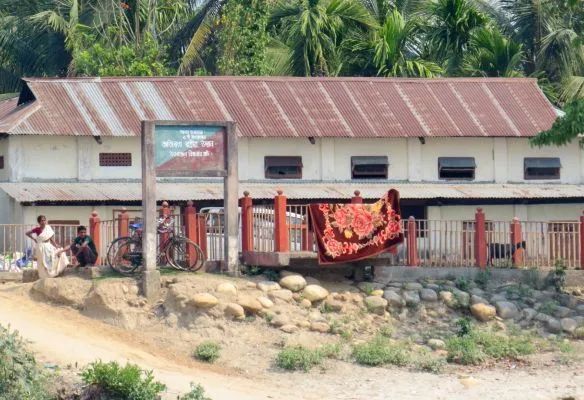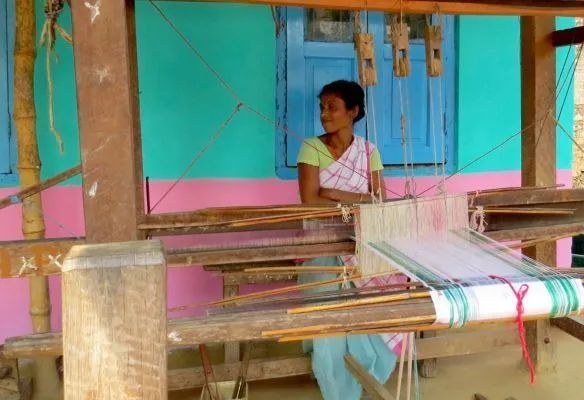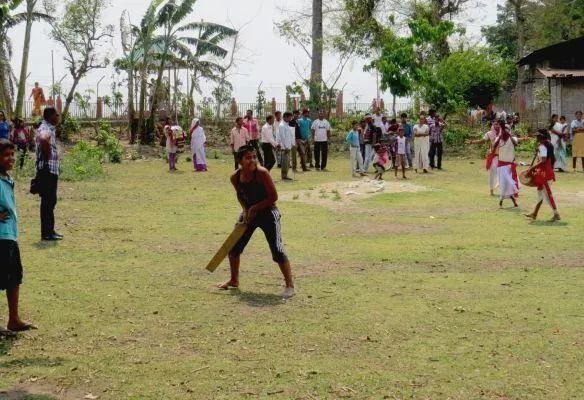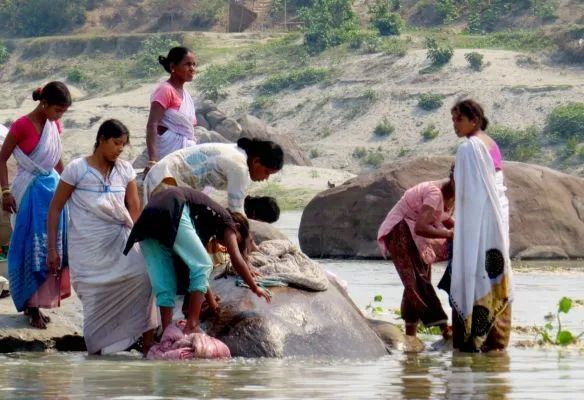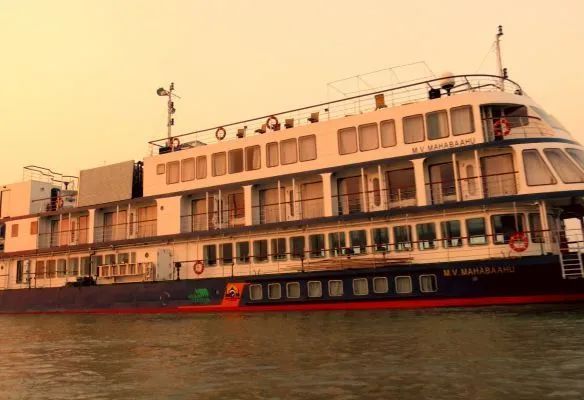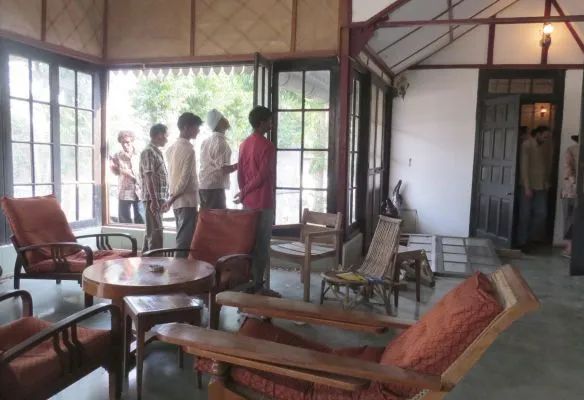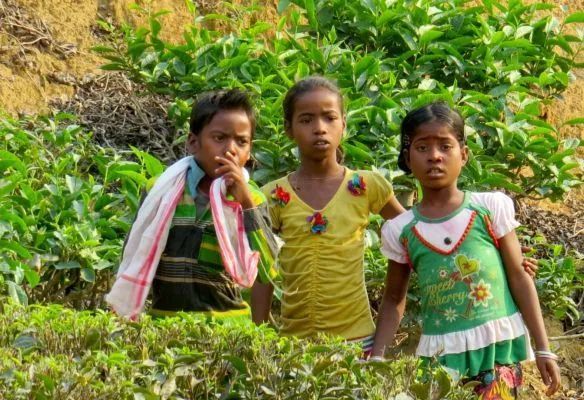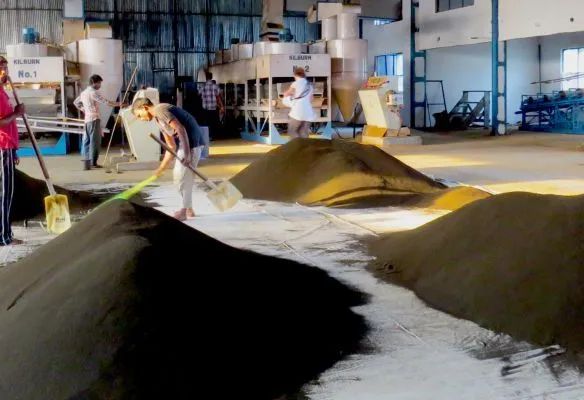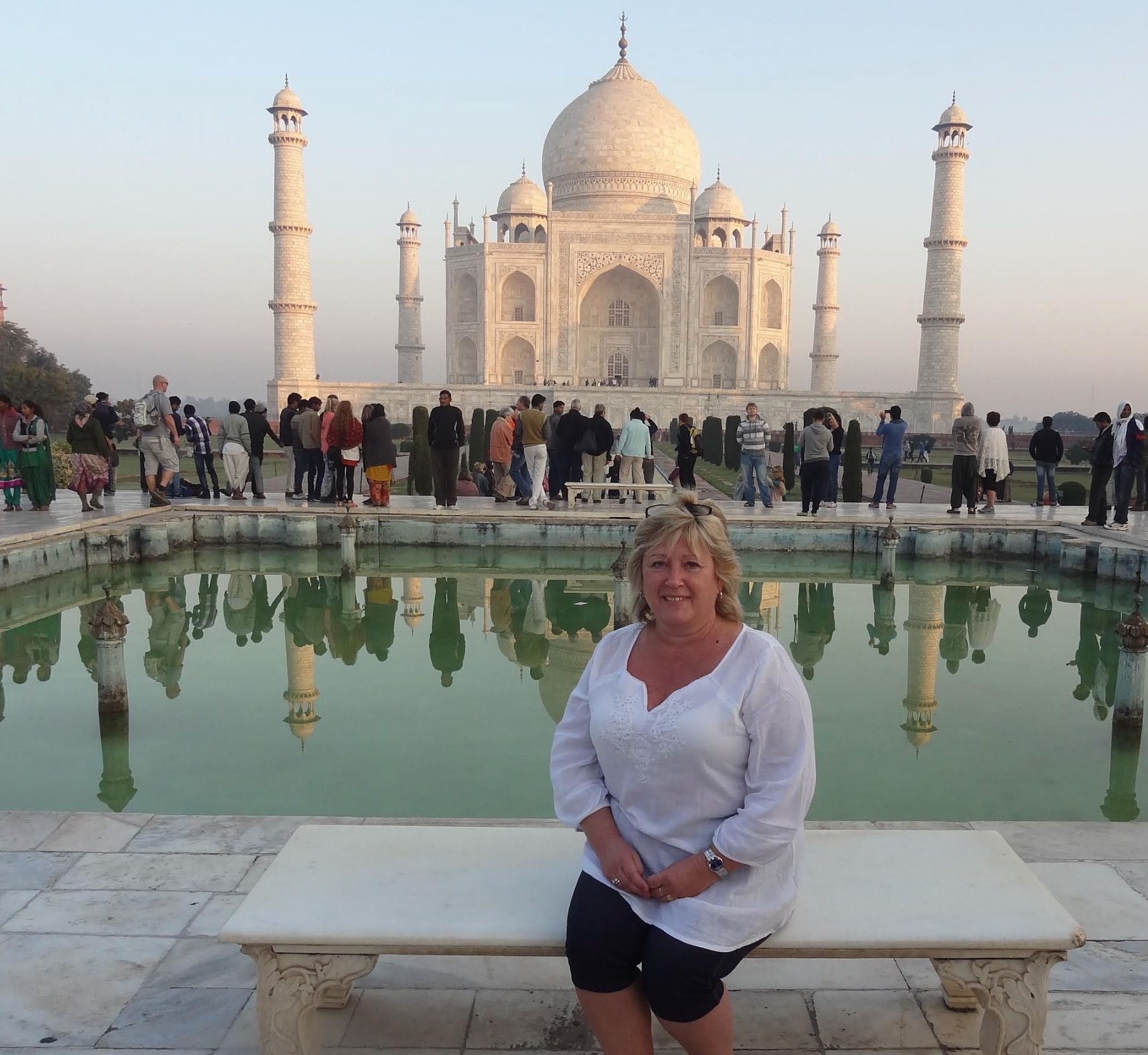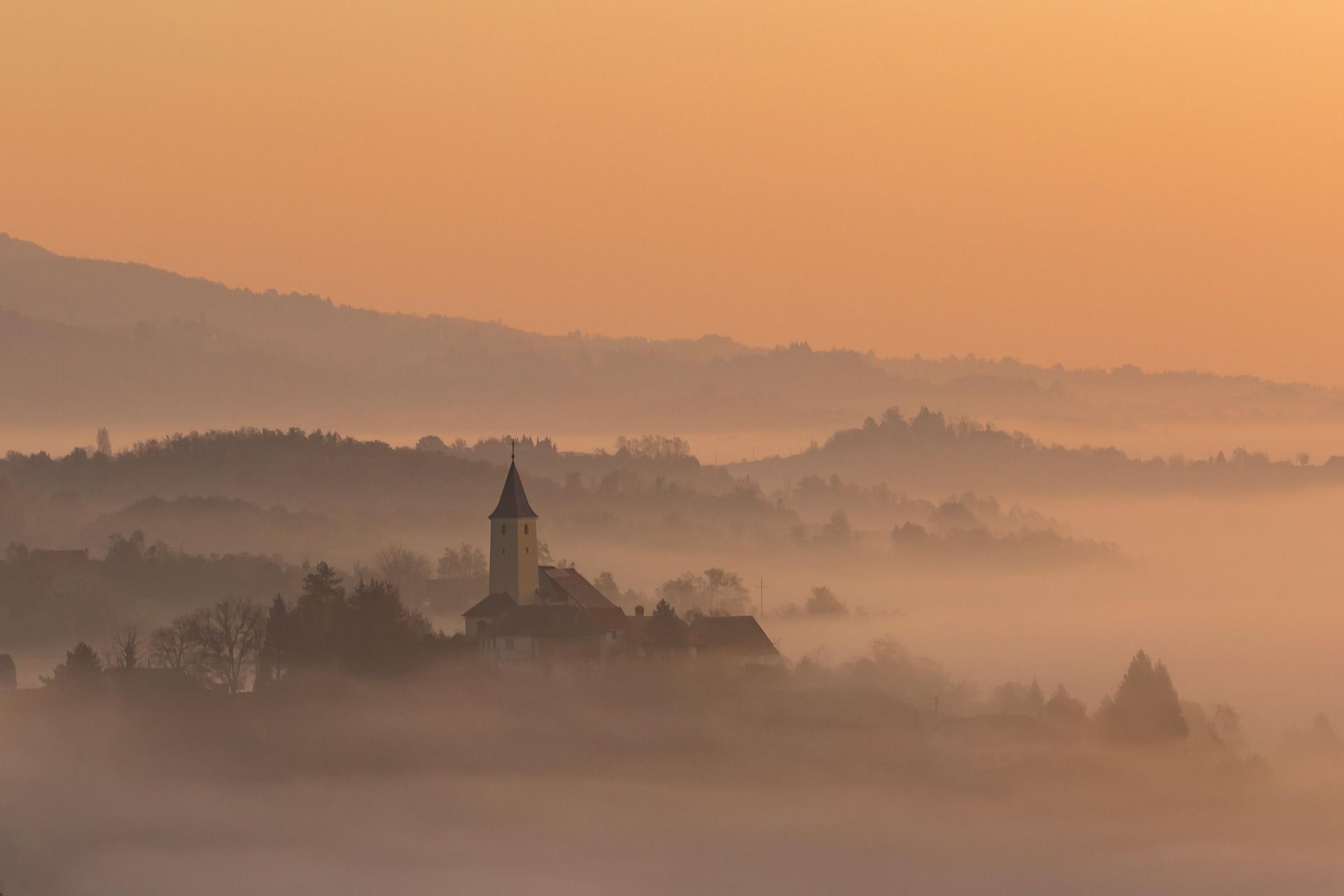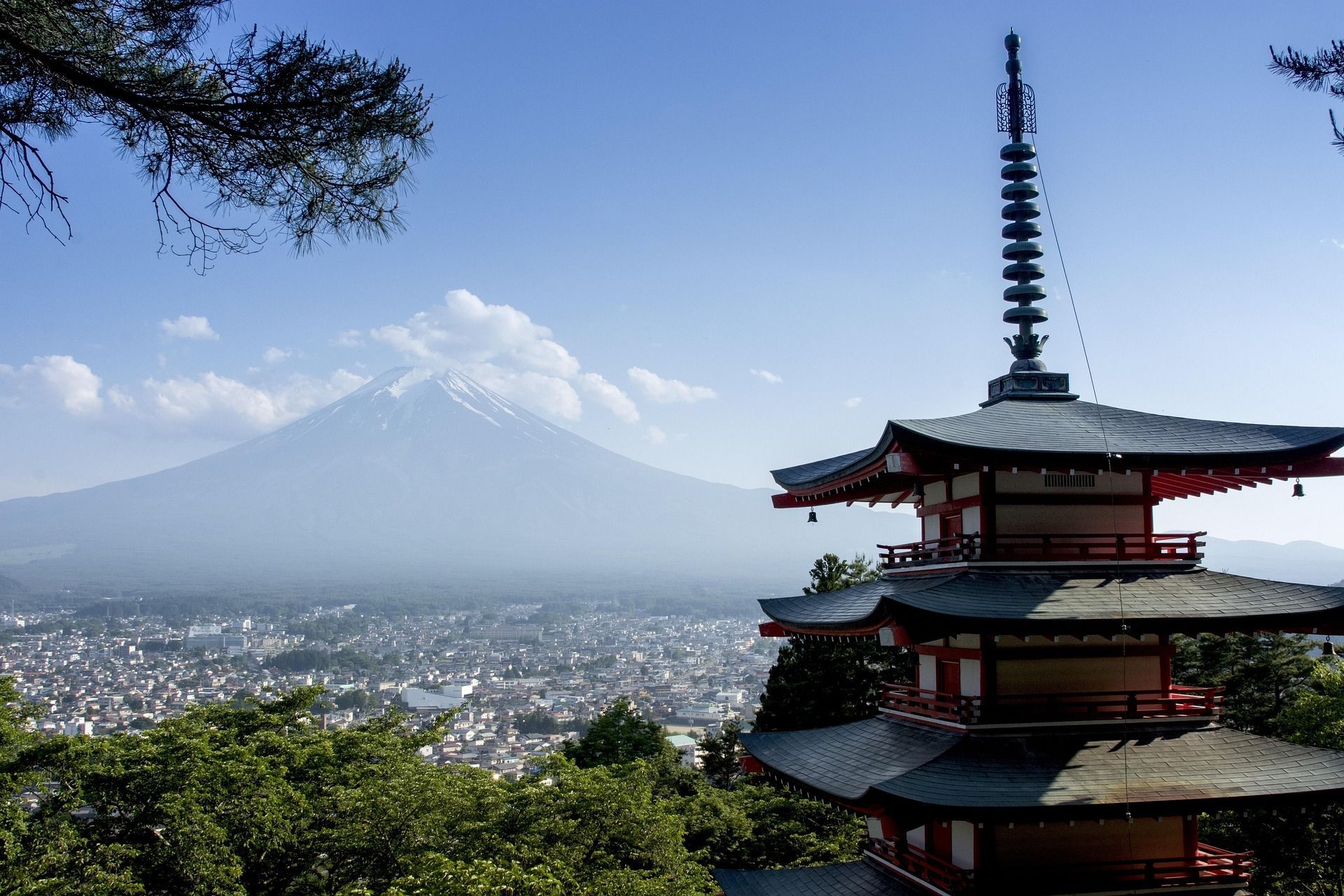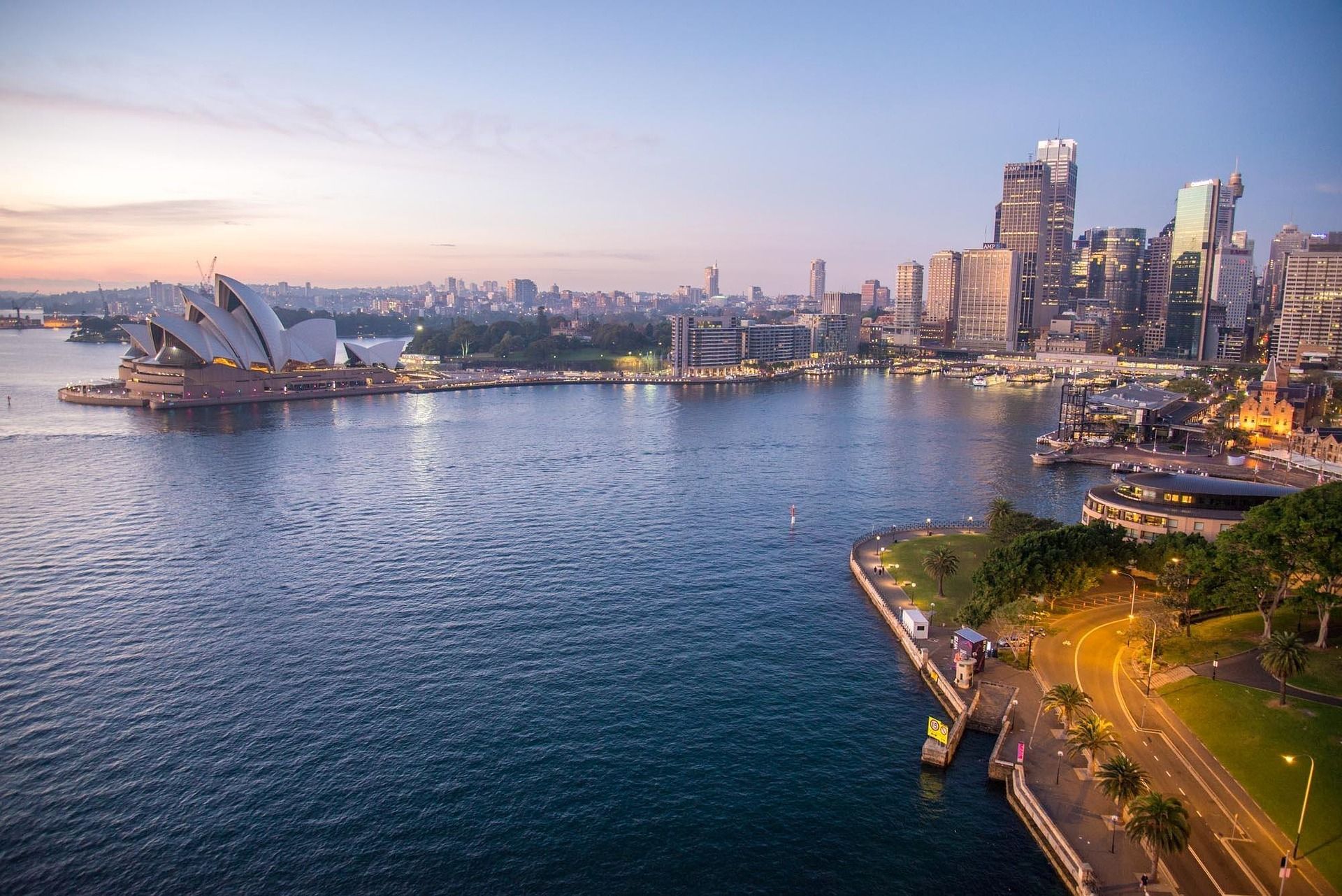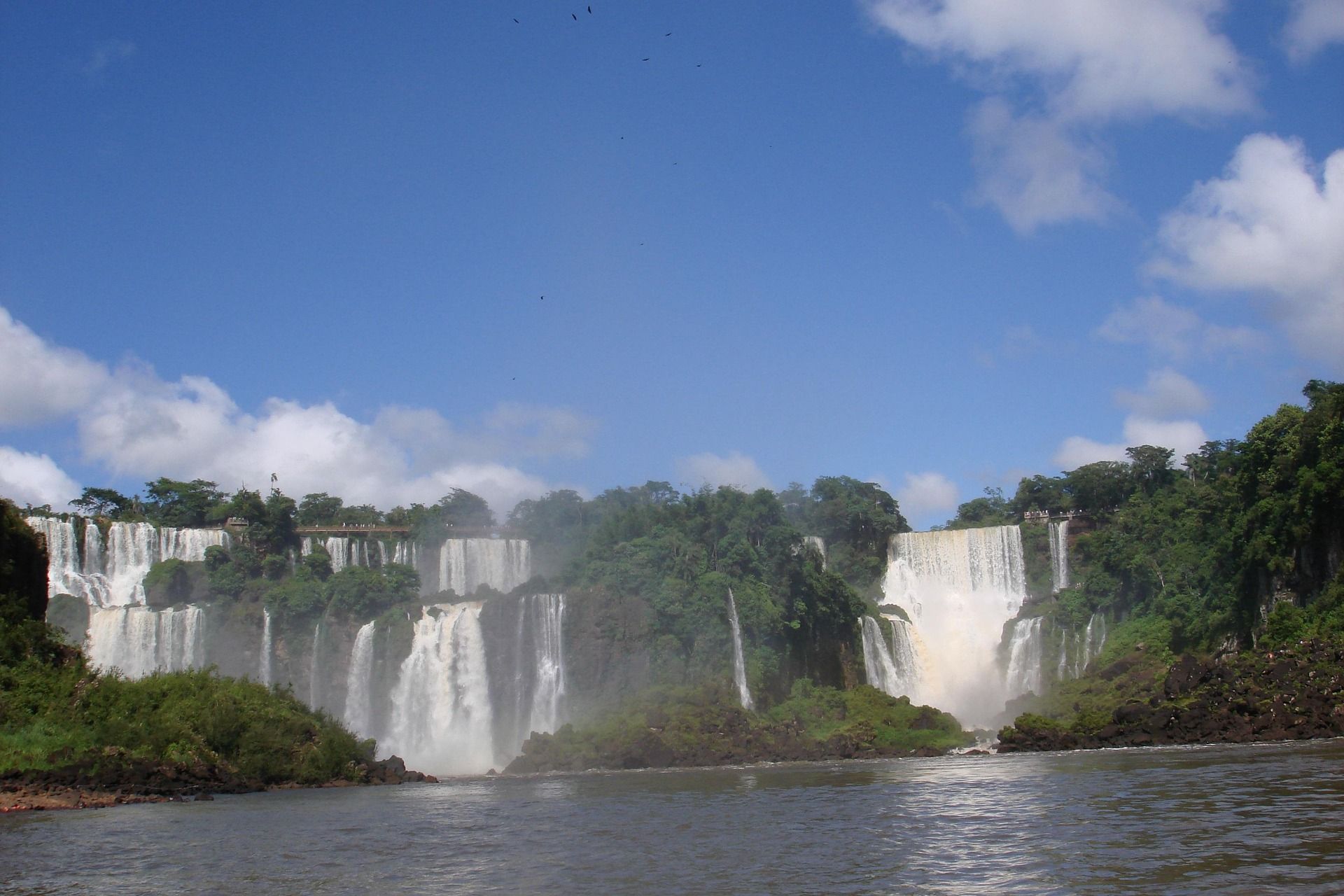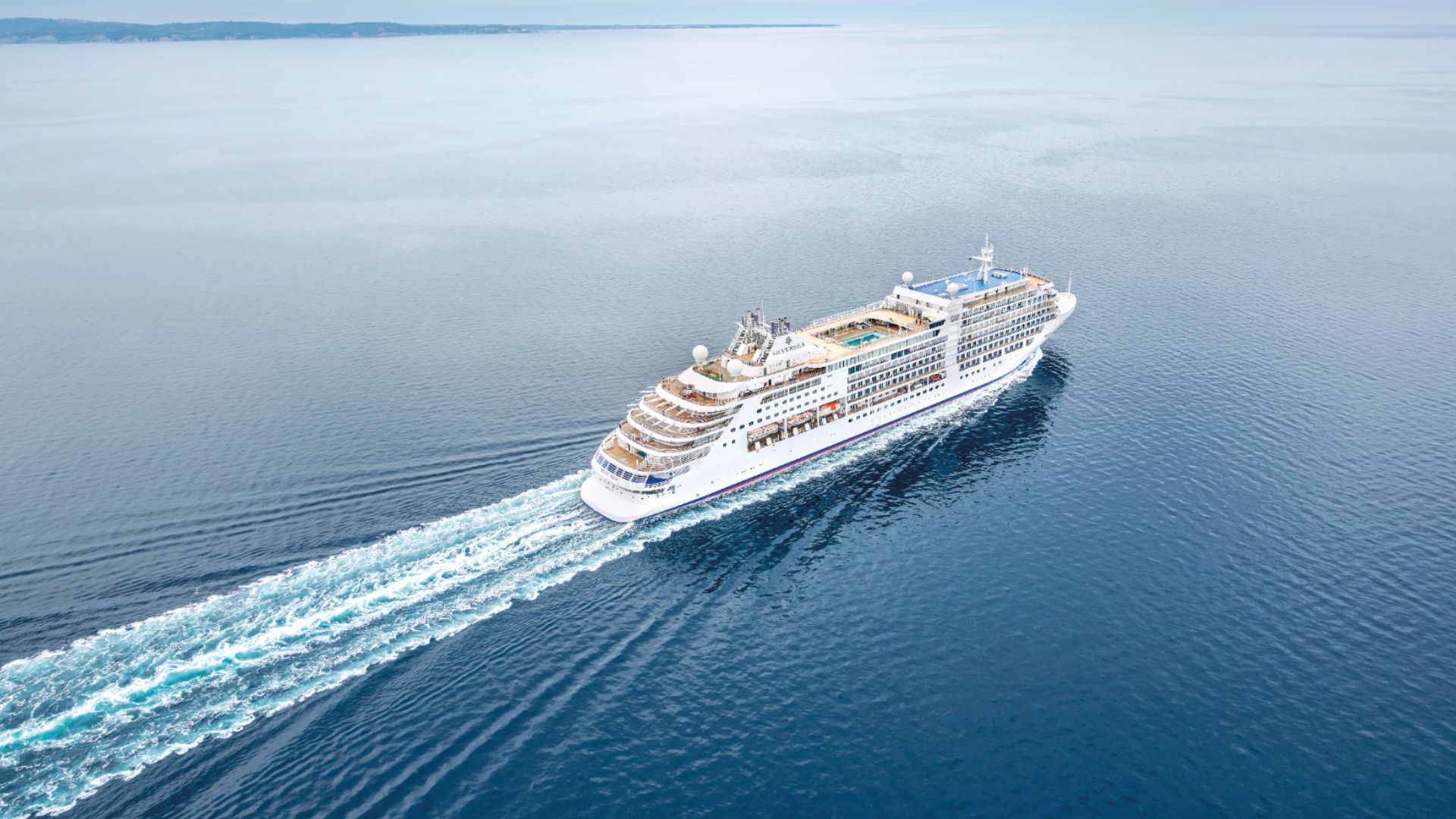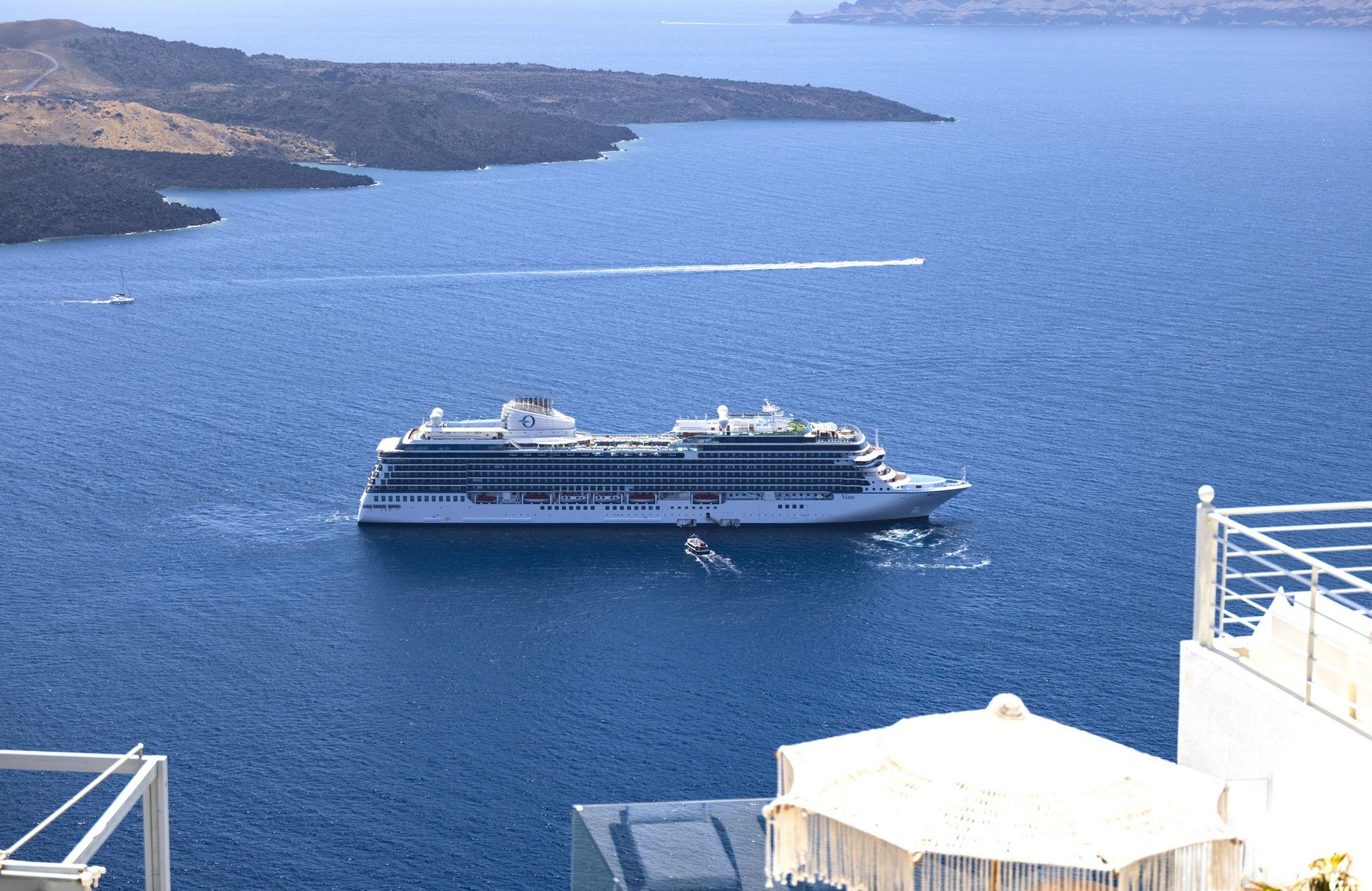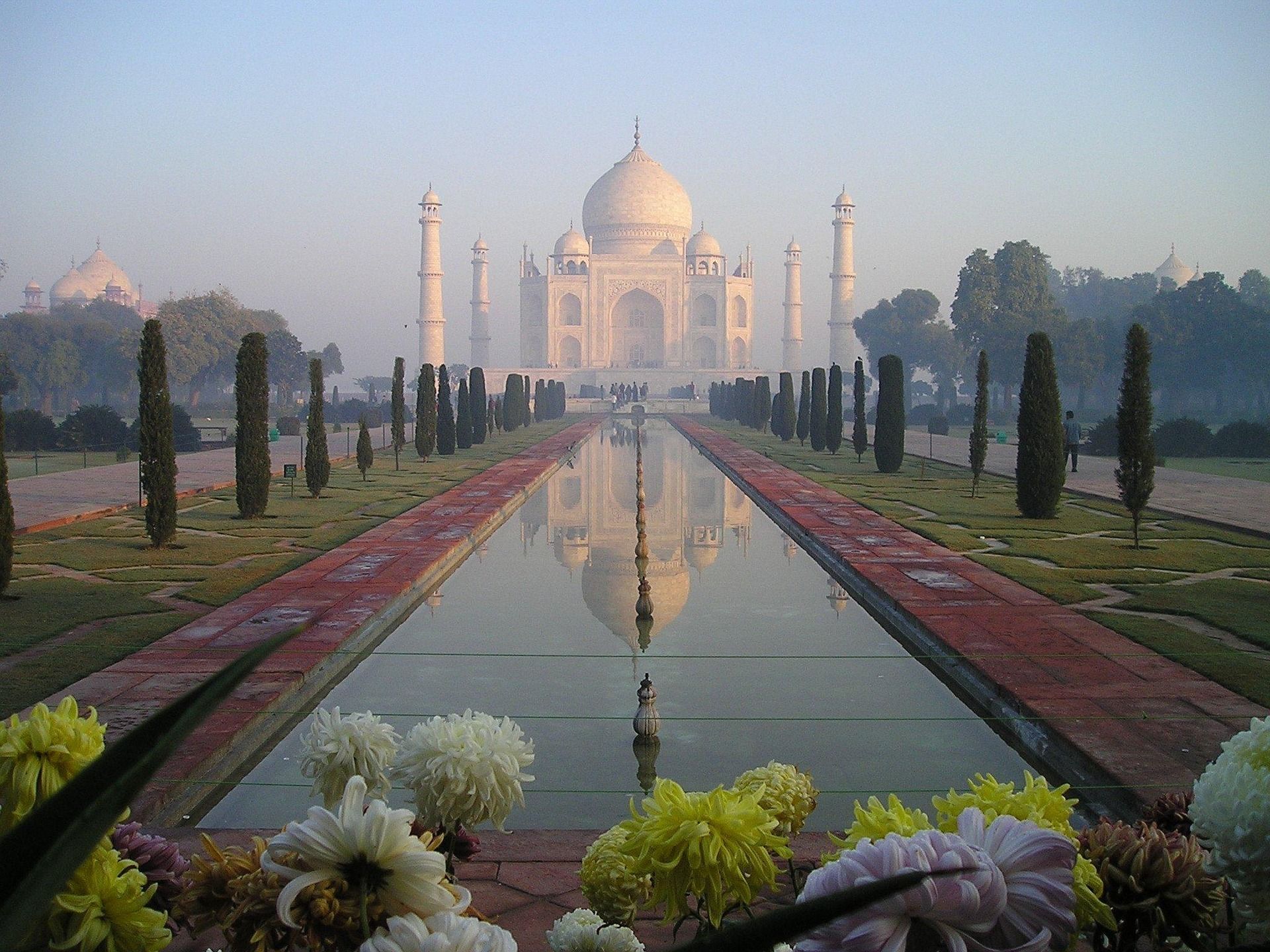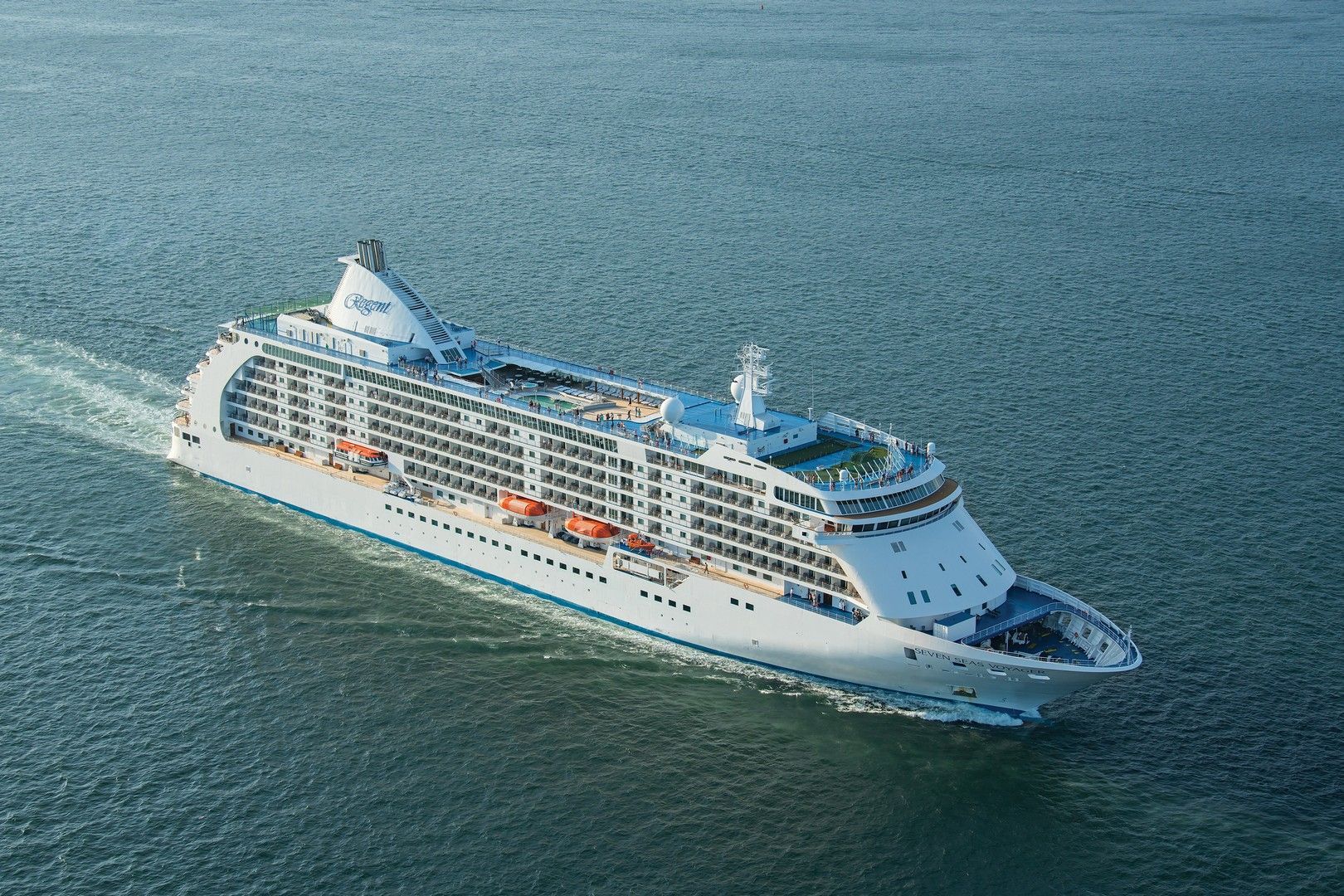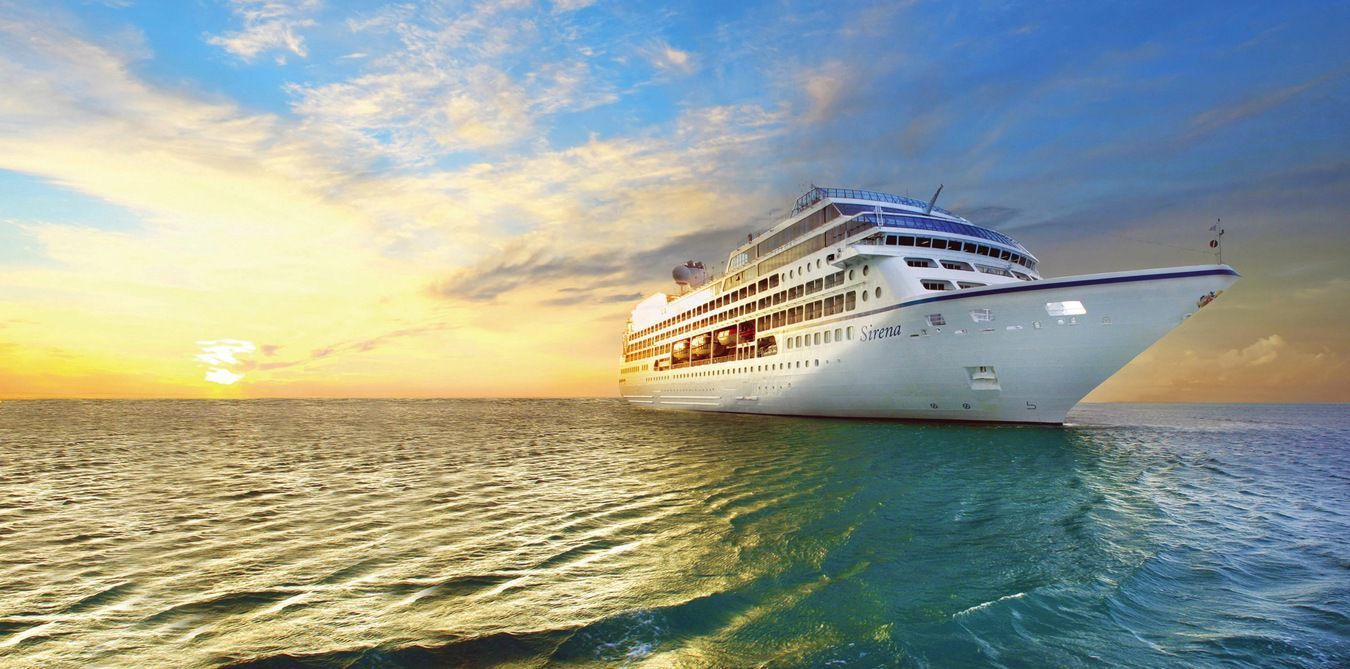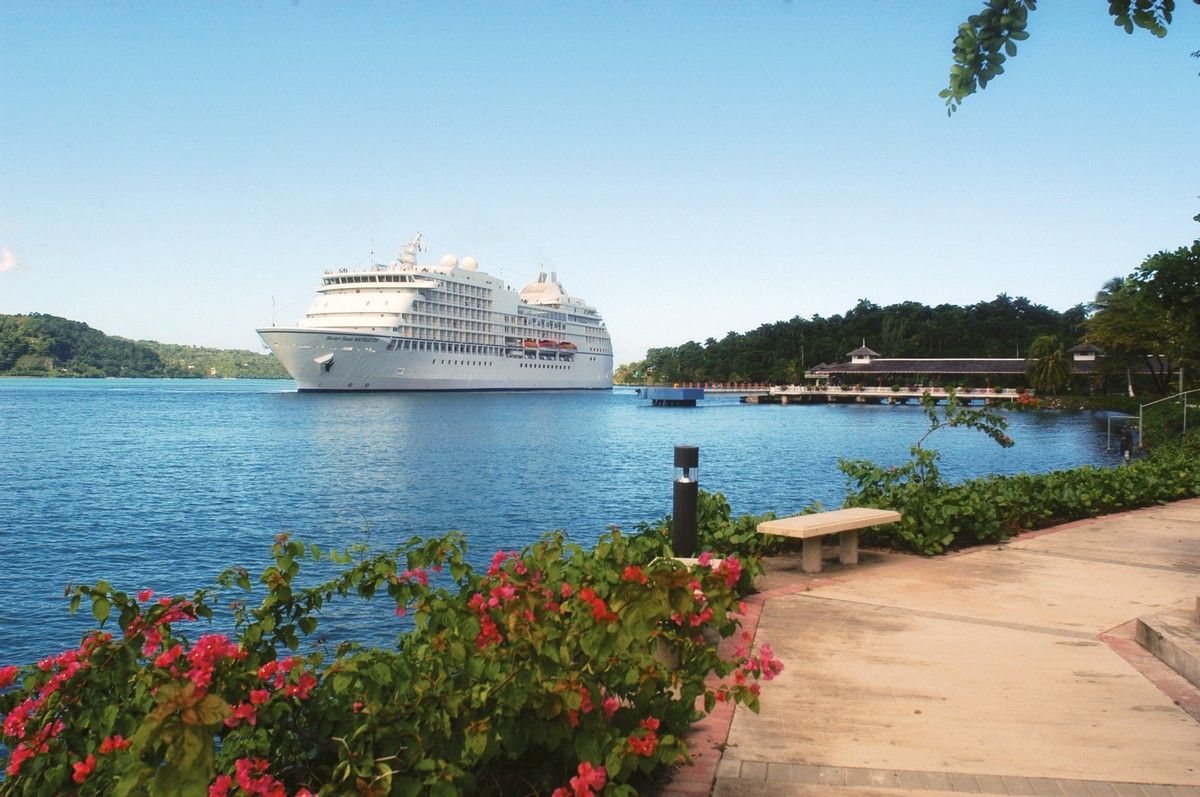BISHWANATH GHAT, ASSAM
Biswanath Ghat is a typical Assamese village, but in many ways different to the one we visited yesterday; you could even call it modern in comparison! The houses were mainly made with brick and had corrugated roofs. Most of them were painted in very bright colours, reminding me of some Caribbean villages I have visited!
The M.V. Mahabaahu makes a weekly visit here, and we were warmly greeted by the locals, not to mention the cows and goats too! The locals had prepared locally produced woven cloth and handcrafted trinkets for us to buy.
We saw women busy at weaving, sitting in the shade underneath their houses. For those families who could not afford their own loom there was an open sided building housing four looms, and women could take turns using them to weave their family’s cloths.
We made our way to an open field where we were treated to a traditional Assamese Bihu dance performance. Whilst this was going on some young boys were busy playing cricket and even challenged one of the passengers to a game, which as expected he lost!
By the time the performance ended I think the whole village had turned out to watch, or perhaps it was to take a look at us! This village had a promenade so we strolled back towards the riverbank enjoying all the sights along the way: men fishing and women in the river washing clothes and young girls rinsing cooking pots.
Once back on board we set sail to Silghat, a town located on the southern banks of the Brahmaputra. We enjoyed our lunch whilst admiring the fascinating landscape from the deck of the M.V. Mahabaahu.
I spotted some water buffalo, pelicans, and to my delight, noticed an Indian one-horned rhino! I managed to zoom in enough to get a photo, albeit a little grainy. Yippee, I was the first passenger to spot a Rhino!
KALIABOR MANOR HOUSE AND TEA FACTORY
We disembarked the cruise ship once we reached Kaliabor and we were driven to the Kaliabor Tea Estate. The original tea plantation home is now a guesthouse, but still has the original furniture and the bedrooms still have tin baths. The lounge area was covered in old photographs and memorabilia whilst the sitting area had breath-taking views of the garden and tea estate.
We walked into the tea estate but unfortunately, there were no pickers at this time, however children from the village spotted us, and came sprinting across the tea plantation to greet us with big smiles, and curious faces.
TEA-MAKING PROCESS
On our tour of the tea factory, it slowly dawned on me how little of the tea-making process I knew! When I pop my tea bag into a cup I take it for granted. Little did I know that it’s not just a question of plucking ‘any old leaf’, it is important that the tenderest leaves are picked in order to produce the finest tea.
It takes between 2000-3000 leaves to make just one kilo of unprocessed tea, not to mention the skill and hard work involved. After plucking, the leaves are taken to the factory for processing.
The first process is ‘withering’ to reduce the moisture by laying the leaves on wire mesh in huge troughs. This is followed by oxidization which has to be monitored constantly in order ensure the quality of flavour.
The next step is ‘drying’ to reduce the moisture even further to about 3%. The leaves are then sifted into different sizes using large machines, which drop the graded leaves into buckets, before they are packed and sent to auction centres to sell to the highest bidders!
What an exciting day! After such a long adventure it was wonderful to head back to the M.V. Mahabaahu Cruise to refresh before dinner. Thank goodness the showers were powerful because our feet were covered in grey dust!
Early to bed that night with my alarm all set for 3am… can you guess why? Tune in tomorrow to hear all about it!!


